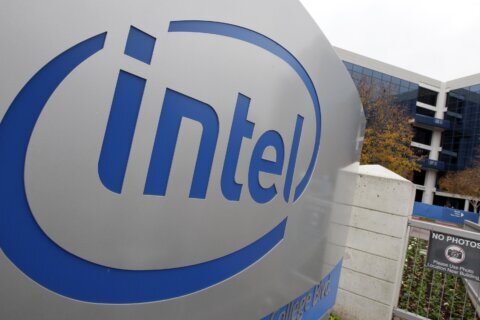Aircraft assembly workers walked off the job at at Boeing factories near Seattle and elsewhere early Friday after union members voted overwhelmingly to go on strike.
Organized labor has made itself heard over the past year and the number of actions taken by unions has soared. There were 470 work stoppages (466 strikes and 4 lockouts) involving approximately 539,000 workers last year, according to Cornell University’s School of Industrial and Labor Relations. The nearly 500 work stoppages resulted in approximately 24,874,522 strike days.
While the number of work stoppages increased by only 9% between 2022 and 2023, the number of workers involved in those work stoppages skyrocketed 141% to well over a half million workers, according to Cornell.
Unions including the UAW, the Teamsters and this week the International Association of Machinists and Aerospace Workers, say they made the sacrifices asked of them by their companies during the pandemic and rough economic economic conditions. Now, they say, it is time for pay and benefits to catch up and workers appear more willing to strike.
Here’s a look at some recent company negotiations with their unions.
Automakers and UAW
Late last year the United Auto Workers union overwhelmingly ratified new contracts with Ford and Stellantis, along with a similar deal with General Motors, that would raise pay across the industry and force automakers to absorb higher costs.
The agreements, which run through April 2028, ended contentious talks that began in the summer of 2022 and led to six-week-long strikes at all three automakers.
The new contract agreements were widely seen as a victory for the UAW. The companies agreed to dramatically raise pay for top-scale assembly plant workers, with increases and cost-of-living adjustments that would translate into 33% wage gains.
Top assembly plant workers were to receive immediate 11% raises and would earn roughly $42 an hour when the contracts expire in April of 2028.
Under the agreements, the automakers also ended many of the multiple tiers of wages they had used to pay different workers. They also agreed in principle to bring new electric-vehicle battery plants into the national union contract.
UPS and Teamsters
UPS workers that are members of the Teamsters union approved a tentative contract with the package delivery company last year. The run up to the approval was not smooth though, with contentious labor negotiations that threatened to disrupt package deliveries for millions of businesses and households nationwide.
After negotiations broke down in early July 2023, Atlanta-based UPS reached a tentative contract agreement with the Teamsters just days before an Aug. 1 deadline.
At the time the tentative agreement was struck, full- and part-time union workers were set to get $2.75 more per hour in 2023, and $7.50 more in total by the end of the five-year contract. Starting hourly pay for part-time employees also got bumped up to $21, but some workers said that fell short of their expectations.
UPS said at the time that by the end of the new contract, the average UPS full-time driver would make about $170,000 annually in pay and benefits. It was not clear how much of that figure benefits accounted for.
As part of the deal, the delivery company also agreed to make Martin Luther King Jr. Day a full holiday, end forced overtime on drivers’ days off and stop using driver-facing cameras in cabs, among a host of other issues. It eliminated a two-tier wage system for drivers and tentative deals on safety issues were also reached, including equipping more trucks with air conditioning.
Video Games and SAG-AFTRA
Earlier this month video game performers reached agreements with 80 individual games that have signed interim or tiered budget agreements with the performers’ union and accepted the artificial intelligence provisions they have been seeking.
The performers had been striking for over a month.
Members of the Screen Actors Guild-American Federation of Television and Radio Artists began striking in July after negotiations with game industry giants that began more than a year and a half ago came to a halt over AI protections.
The interim agreement secures wage improvements, protections around “exploitative uses” of artificial intelligence and safety precautions that account for the strain of physical performances, as well as vocal stress. The tiered budget agreement aims to make working with union talent more feasible for independent game developers or smaller-budget projects while also providing performers the protections under the interim agreement.
Las Vegas Resorts and Culinary Workers Union
Last month thousands of hospitality union workers on the Las Vegas Strip reached a tentative deal with the Venetian and Palazzo resorts, a first for employees at the sprawling Italian-inspired complex that opened 25 years ago.
The Culinary Workers Union announced on the social platform X that the deal came together after a year of negotiations. It covers over 4,000 hotel and casino workers, from housekeepers and cocktail servers to bartenders and porters.
Bethany Khan, a union spokesperson, said the deal mirrors the major wins secured in recent contracts awarded to 40,000 hospitality workers at 18 Strip properties owned or operated by casino giants MGM Resorts International, Caesars Entertainment and Wynn Resorts.
Those wins included a 32% pay increase over five years, housekeeping workload reductions and improved job security amid advancements in technology and artificial intelligence.
The bump in pay under those contracts will amount to an average $35 hourly wage by the end of the contracts, according to the union. Workers at these properties were making about $26 hourly with benefits before winning their latest contracts in November.
Kaiser Permanente and Health Care Worker Unions
Unions representing 85,000 health care workers reached a tentative agreement with industry giant Kaiser Permanente in October 2023 following a strike over wages and staffing levels.
The deal included setting minimum hourly wages at $25 in California, where most of Kaiser’s facilities are located, and $23 in other states. Workers would also see a 21% wage increase over four years.
The lead up to the tentative agreement included a three-day strike involving 75,000 workers in multiple states.
The tentative agreement also included protective terms around subcontracting and outsourcing, as well as initiatives to invest in the current workforce and address a staffing crisis.
Hollywood Studios and SAG-AFTRA
Hollywood’s actors voted to ratify a deal with studios in December 2023 that ended their strike after nearly four months, bringing an official finish to a labor strife that shook the entertainment industry for most of last year.
Members of the Screen Actors Guild-American Federation of Television and Radio Artists approved a three-year contract.
Control over the use of artificial intelligence was the most hard-fought issue in the long, methodical negotiations. The contract called for a 7% general pay increase with further hikes coming in the second and third years of the deal.
The agreement also included a hard-won provision that temporarily derailed talks: the creation of a fund to pay performers for future viewings of their work on streaming services, in addition to traditional residuals paid for the showing of movies or series.
U.S. ports and the International Longshoremen’s Association
In a little over two weeks, it’s likely that about 45,000 dockworkers along the U.S. East and Gulf coasts will go on strike and shut down as many as 36 ports that handle almost half of the nation’s cargo from ships entering and exiting the nation. While consumers probably won’t see much of an impact if the strike isn’t long, there could be shortages that would hurt the U.S. economy if the walkout by the International Longshoremen’s Association goes for more than a month.
Copyright © 2025 The Associated Press. All rights reserved. This material may not be published, broadcast, written or redistributed.







